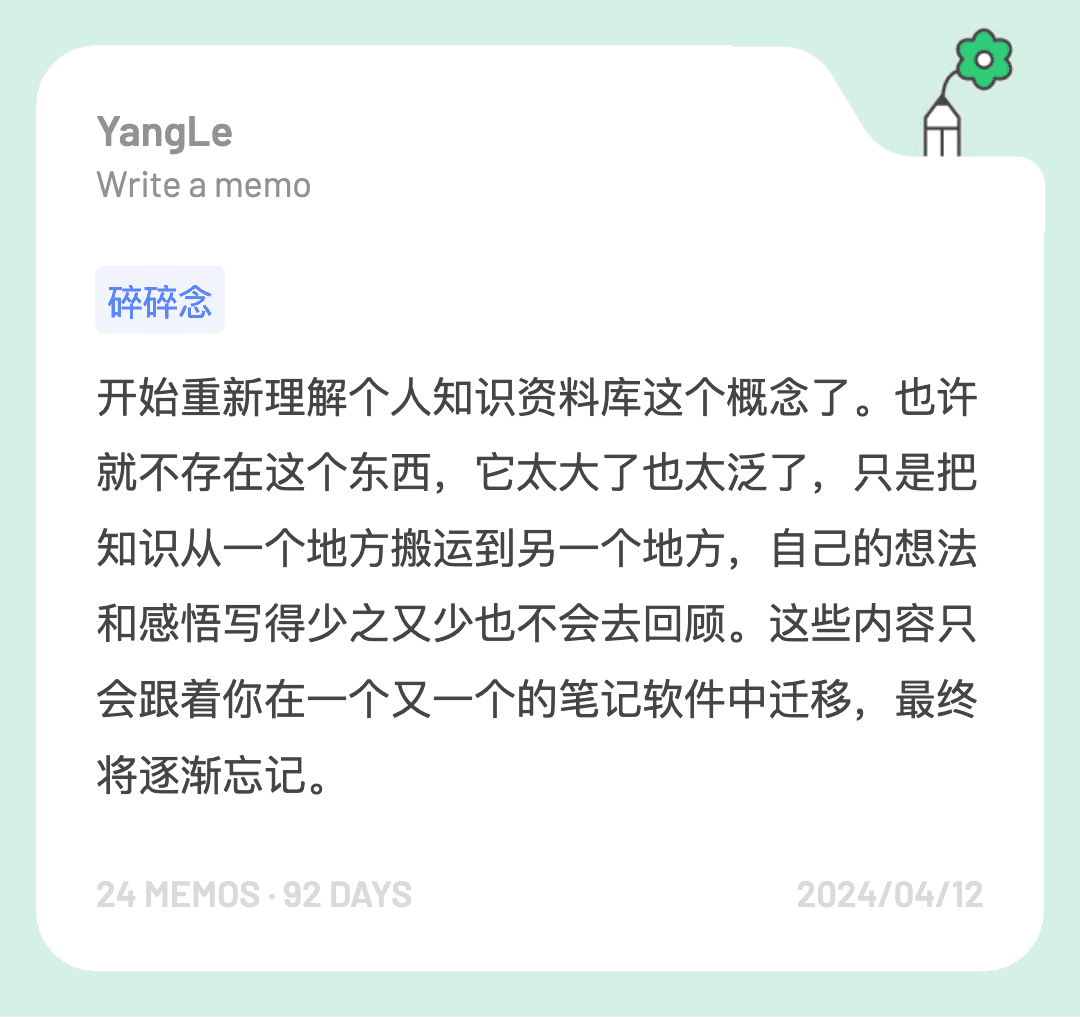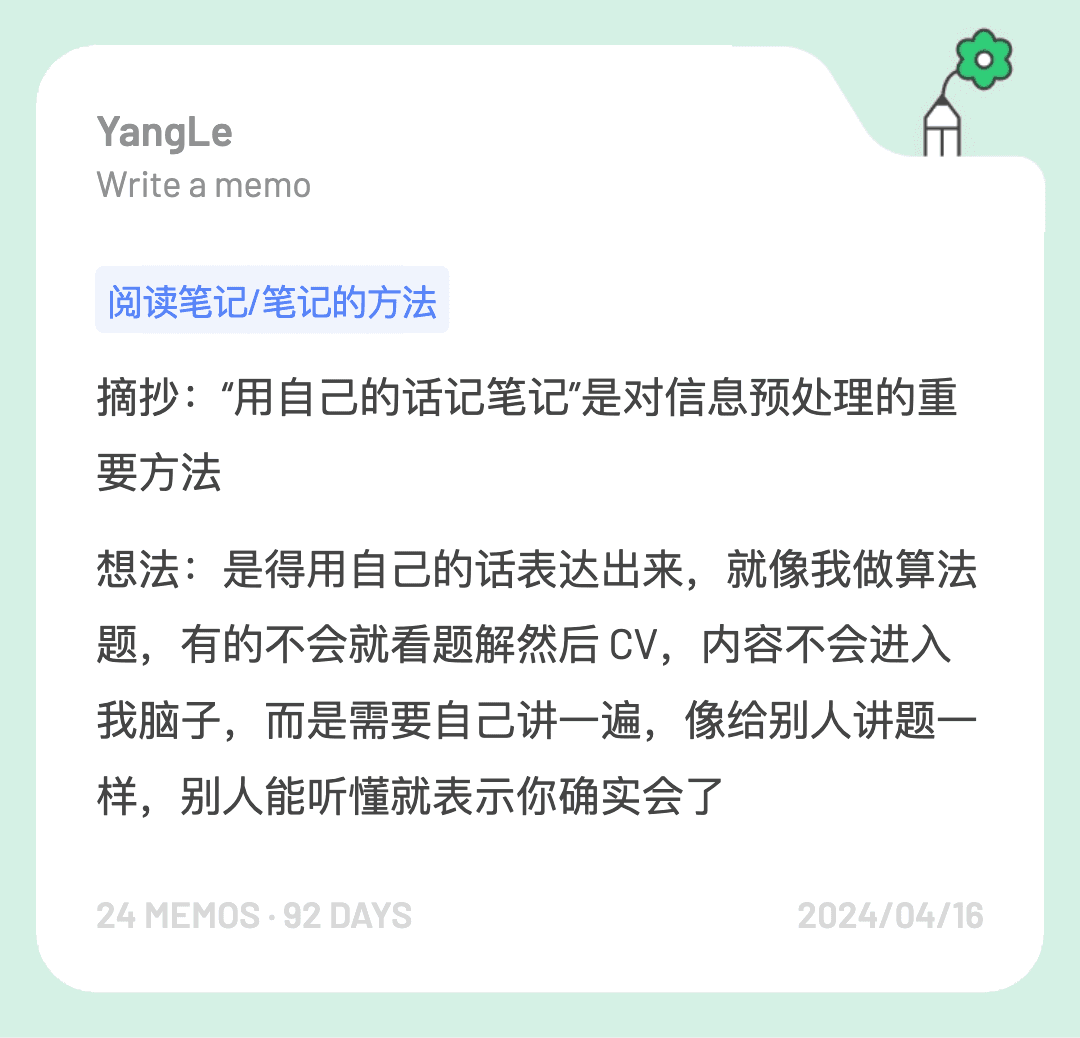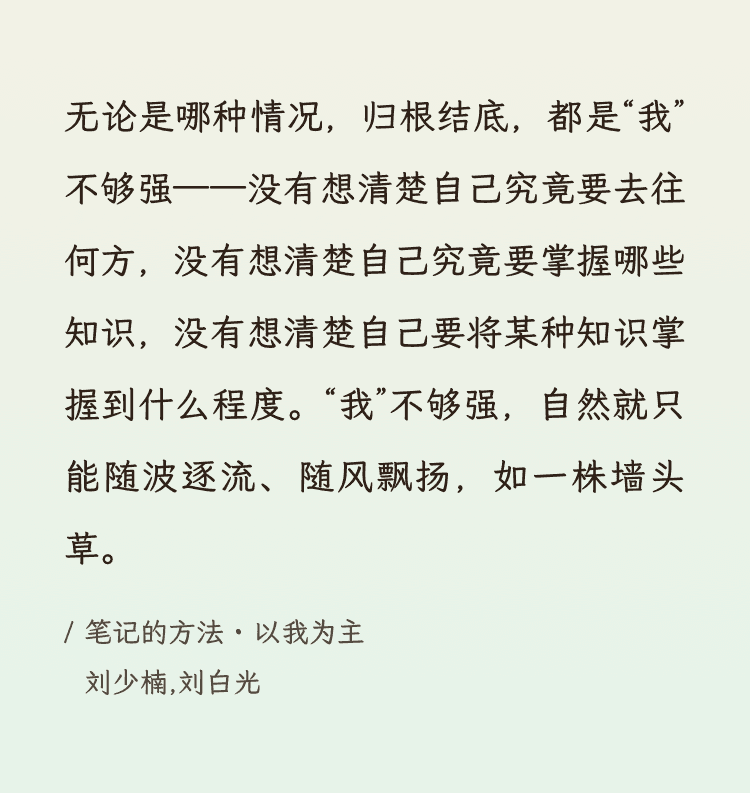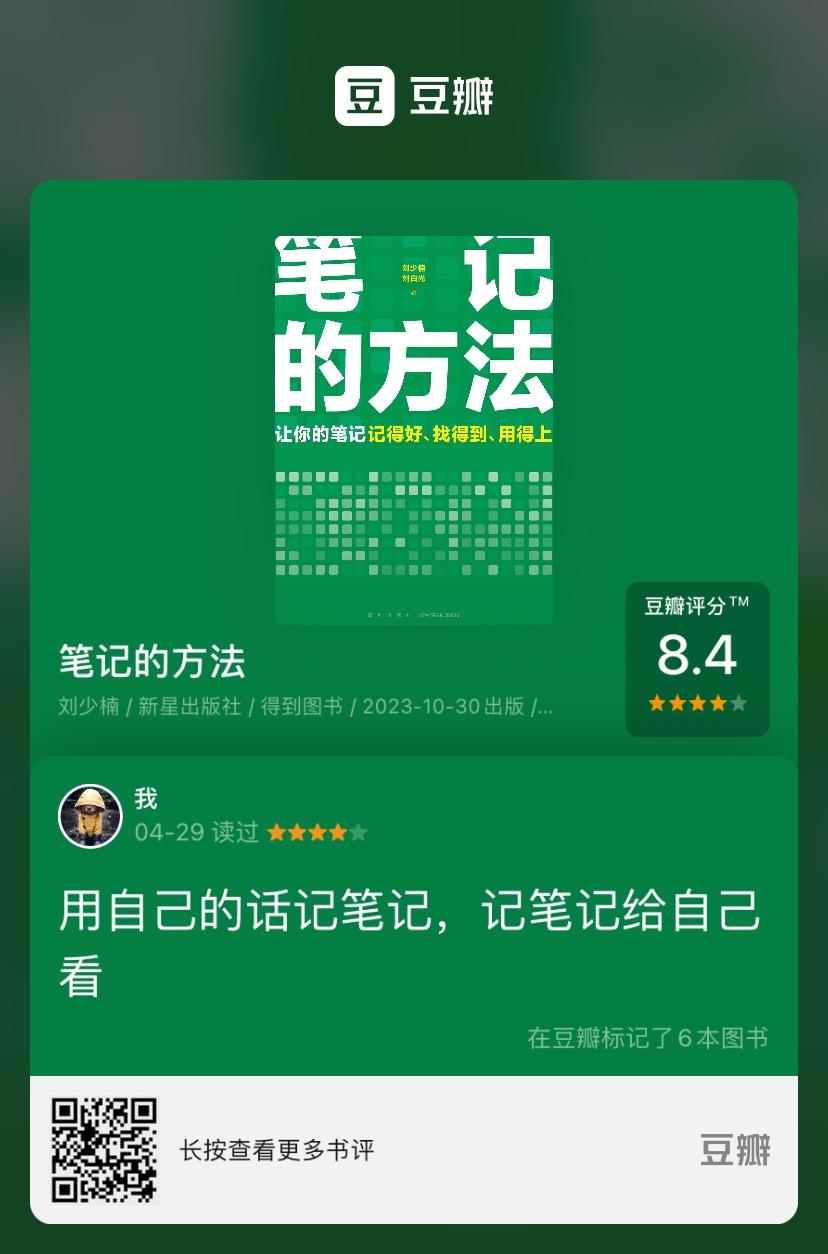Last month, I reorganized the tools I use, and one of them is flomo. I mainly use it to record fleeting thoughts, notes that don't become articles, life logs, and self-evaluations. It supports multiple platforms and can also be used to quickly record your thoughts by sending messages directly to a WeChat public account. This is why I chose this product.
The author of flomo, Shaonan, treats it as a product, not just an app, and not a money-making application. He even created a website called flomo 101 to specifically introduce flomo and how to take notes. I learned about this book from there.
Last month, I created a new account and started using flomo again, and I made my first note.

Looking back now, I can understand my thoughts at that time. I used various note-taking software such as Obsidian, Notion, and Logseq, but I won't do that anymore. I'll focus on writing content.
When I first started using flomo, I mainly recorded my daily thoughts (tagged as fragments), things I said to myself (tagged as ramblings), and some work-related records such as weekly reports and daily summaries. But I always felt that I took notes, but how to use them and find them quickly when I need them. With these questions in mind, I opened the book "The Method of Note-Taking" and hoped to find answers.
The book is divided into four parts: how to use notes, how to take notes, how to filter information that needs to be noted, and how to manage notes.
How to Use Notes#
The article mentions that the purpose of notes is to reinforce your future self. In simple terms, it means that when you write articles, have conversations, create products, think, or brag in the future, you need to have ink in your belly. If you review every note you made before and do it seriously, then that note becomes a part of you, rather than just something you copied.
When I write this article, I can see all my thoughts when I was reading this book by reviewing the tag #Reading Notes/The Method of Note-Taking on flomo. These thoughts can be useful to me.

How to Take Notes#
"Take notes in your own words" is an important method for preprocessing information. The human brain is for thinking, not for storing things. I fell into the trap of the "second brain" before, and there are many videos and articles online about this, which may not be incorrect but not suitable for me. Most of the time, I just transfer various knowledge to note-taking tools, and I never use them again. For example, I recently studied a booklet about TypeScript, and I wrote a lot for each chapter, but now I can't remember what I talked about. That's not taking notes, it's mindlessly copying knowledge.
So now, when I underline while reading, I also record my thoughts in my own words on flomo. This is the effective way to take notes.

The article also introduces some methods of tagging. Regardless of the method, it needs to be suitable for oneself and convenient to use because notes are for personal use, and you need to be able to quickly find the content you need in your own way.
The author also lists several of his own tags, which I think are good and have started using. For example, #LifeLog/Emotions/mid, I now record my emotions every night at 11 o'clock, writing three entries for morning, noon, and evening. The important thing is to write background information so that I can distinguish the specific situation at that time when reviewing in the future. Another one is #Self/Regrets, and of course, there are other emotions that can be written under the Self tag. You are the most important thing to record in your life.
How to Filter Information That Needs to Be Noted#
Subtraction: Reduce Your Sources of Information#
In the era of AI, various information enters your life through computers, phones, and other means. Big data and algorithms reveal your living habits. Apps like TikTok and Xiaohongshu, you tirelessly swipe through them, and the fragmented information stimulates your dopamine. This information does not stay in your brain, and afterwards, you feel empty and lonely.
If you don't want algorithms to guess your preferences, you can subscribe to RSS content and follow some excellent knowledge platforms. You need to think and summarize these contents by yourself. The nutrition in the contents that are chewed up and fed to you is gone.
Addition: Increase High-Quality Information Sources Beyond Books#
The author mentions:
- Treat others as sources of information and listen to practitioners.
- Treat yourself as a method and go out to practice.
Multiplication: View Information from Multiple Perspectives#
How to Manage Notes#
Put Myself First, Reinforce the Future#
There is too much knowledge in the world, and it is impossible for an individual to learn everything. What we need to know is the direction we want to accumulate knowledge in. If a person doesn't know which port to sail to, then no direction of the wind is favorable.

Don't take notes just for the sake of taking notes, and don't manage knowledge just for the sake of managing knowledge. Taking notes is just a process, and the purpose is the most important. The core of accumulating knowledge is to reinforce your future self.
Methods and tools are not the most important things. You must think clearly about the purpose of taking these notes. After you figure out these things, the methods and tools for recording are just embellishments.
Put Myself First, Examine Knowledge#
You need to examine your own direction and not be a fence-sitter. Focus on your own field, and remember that any knowledge has its own application scenarios. Don't blindly follow external standards, always put yourself first.
Conclusion#
The book mainly focuses on these four parts. It is not a user manual for flomo but is suitable for most people who are taking notes or planning to take notes. It introduces some practical ways of taking notes based on the author's experience.
I learned some note-taking techniques from this book, but I still need to continue to improve.

Recommended reading, four stars.
Originally published on my blog.